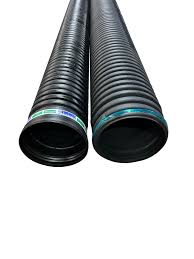Nov . 24, 2024 09:06 Back to list
ppr plumbing fittings products
Understanding PPR Plumbing Fittings An Essential Guide
In today's modern plumbing systems, durability and efficiency are paramount. One of the foremost materials leading the way in plumbing fittings is Polypropylene Random Copolymer, commonly known as PPR. PPR plumbing fittings are gaining increased popularity among both professionals and DIY enthusiasts due to their remarkable properties and ease of use.
Benefits of PPR Plumbing Fittings
PPR fittings are designed to offer a multitude of benefits. One of the most significant advantages lies in their resistance to corrosion and chemical attack. Unlike traditional metal fittings, which can rust over time or react negatively to various chemicals, PPR fittings maintain their integrity in a wide range of environments. This characteristic is particularly beneficial in residential plumbing systems, industrial applications, and even in potable water systems.
Another key benefit of PPR is its excellent thermal insulation properties. PPR fittings and pipes have a low thermal conductivity, which helps minimize heat loss in hot water systems. This not only enhances energy efficiency but also contributes to lower energy bills. Furthermore, PPR can withstand temperatures ranging from -20°C to 95°C, making it suitable for both cold and hot water applications.
Installation and Maintenance
One of the standout features of PPR plumbing fittings is the ease of installation. PPR is lightweight and easy to handle, which simplifies the transport and setup processes. The fittings can be welded together using a heat fusion technique, which creates a seamless joint that significantly reduces the risk of leaks. This method not only makes installation faster but also provides a robust and secure connection that can last for many years.
ppr plumbing fittings products

Maintenance for PPR systems is relatively straightforward. As these fittings are resistant to scaling or deposition, they require less frequent cleaning than metal fittings. This characteristic is particularly advantageous in areas with hard water, where mineral build-up can affect the functionality of plumbing systems.
Environmental Considerations
As the world continues to focus on sustainability, PPR fittings present an environmentally friendly option. They are recyclable, leading to less waste in landfills. Additionally, the production of PPR materials involves less energy compared to traditional materials, contributing to a lower carbon footprint.
Conclusion
In summary, PPR plumbing fittings are an excellent choice for those looking to enhance their plumbing systems. With their corrosion resistance, thermal insulation properties, easy installation, and low maintenance requirements, they provide a reliable solution for various applications. As environmental awareness grows, the role of PPR fittings in sustainable construction is becoming increasingly important.
For homeowners, contractors, and builders alike, choosing PPR plumbing fittings can represent a long-term investment in quality and efficiency. Whether you are planning a new plumbing project or upgrading an existing system, consider the advantages that PPR can offer. Embrace the future of plumbing and ensure your systems are built to last with PPR fittings.
-
High-Quality PVC Borehole Pipes Durable & Versatile Pipe Solutions
NewsJul.08,2025
-
High-Quality PVC Perforated Pipes for Efficient Drainage Leading Manufacturers & Factories
NewsJul.08,2025
-
High-Quality PVC Borehole Pipes Durable Pipe Solutions by Leading Manufacturer
NewsJul.08,2025
-
High-Quality PVC Borehole Pipes Reliable PVC Pipe Manufacturer Solutions
NewsJul.07,2025
-
High-Quality UPVC Drain Pipes Durable HDPE & Drain Pipe Solutions
NewsJul.07,2025
-
High-Quality Conduit Pipes & HDPE Conduit Fittings Manufacturer Reliable Factory Supply
NewsJul.06,2025

